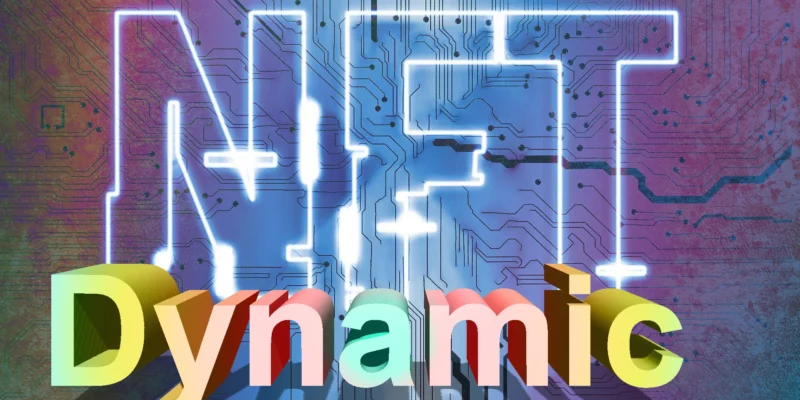- Dynamic NFTs are a result of smart contracts and real-time data.
- Oracles play a pivotal role in creating defects. They provide and validate external data that exists on-chain and off-chain.
- They are helpful in real estate, gaming, and sports. The Chainlink Verifiable Randomness Function (VRF) makes these tokens play-to-earn too.
Delve Into Dynamic NFTs
NFTs have become quite popular but it’s not the same for dNFTs. Smart contracts and real-time data provided by oracles are intrinsic parts of both. Moreover, external conditions also impact the price of these assets. But there’s one attribute that makes dNFT truly distinct: metadata. It enables the token to include various types of details like features, names, and descriptions. The outcome of annexing the data in tokens is the updation of metadata. One gets an option to keep the data off-chain or on-chain. On-chain data is info that the apps themselves create. A new score in a game or a sudden jump in a token’s price are relevant examples. On the other hand, the platforms procure off-chain data through oracles.
It can contain a diverse category of details like real-world assets or an update. With this functionality, dNFTs open up a wide avenue of possibilities. The industries that can make the most of this technology are gaming, sports, and real estate. It also had an impact on the Web3 domain. The VFR function enables these tokens to offer play-to-earn capabilities.
Applications Needed to Create Dynamic NFT
MetaMask
It’s a browser extension that enhances communication between NFT marketplaces and Ethereum-based dApps. Also, it lets the tokens interact with other users.
Hardhat
It is a smart contract development framework that creates and deploys NFTs on Ethereum.
Truffle
Truffle performs in the same way as Hardhat. It facilitates the creation and deployment of tokens.
Polygon
It is a Layer-2 scaling solution for Ethereum that creates cheap NFTs swiftly.
Chainlink Keepers
It’s a decentralized platform that automates smart contract functions. It creates developing NFTs that change their dispositions accordingly.
Chainlink VRF
It is a secure and reliable source that creates unique NFTs.
Create Dynamic NFT With These Easy Steps:
- Use ERC-721 or ERC-1155 standard to create a token.
- In the IPFS URIs, upload the image one wants to make a token of.
- Run a compile check.
- Tick the option of “Keepers Compatible” in the contract.
- NFTs need to be modifiable based on variables. Create a smart contract to enable that function.
- The final step is to test the dynamic NFT.
What to Choose: Static or Dynamic NFTs?
No one can change a static NFT which makes it a safer option. However, its dynamic counterpart lets you do that. It become a suitable option for those entities that regularly update their information. So, based on the disposition of the business, one can choose the right one.
Merits of Dynamic NFTs
These distinct non-fungible tokens come with high versatility, interactivity, and programmability. When implemented, these factors bring new streams of revenue for creators and collectors. The NFTs can consistently incorporate new data to keep themselves updated. They can swiftly change their properties as per the off-chain and on-chain events.
Furthermore, they come with high programmability. They emerge as the go-to option for many industries due to their scalability. They are able to take collaboration to a higher level and make monetization easier and better.


Comments